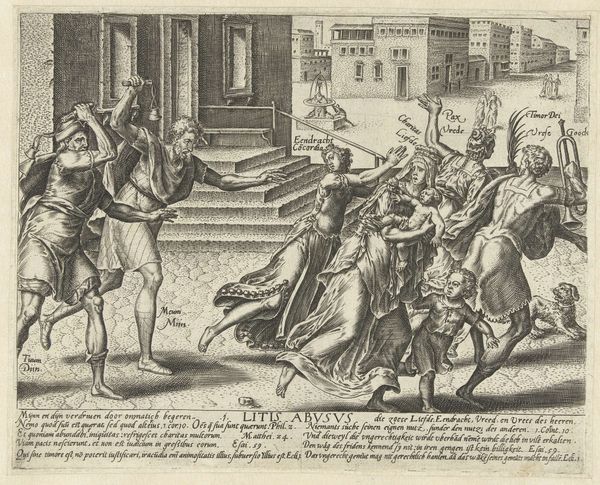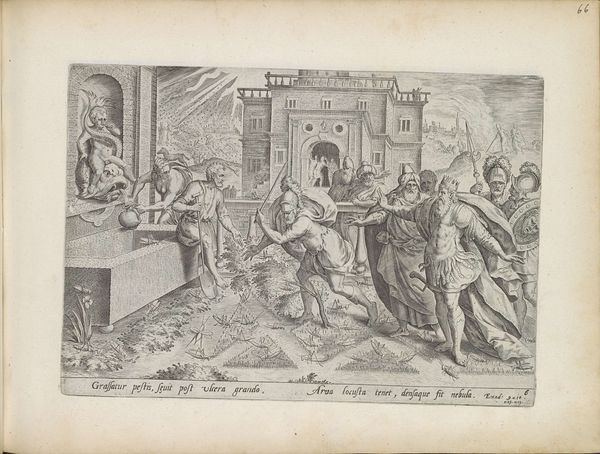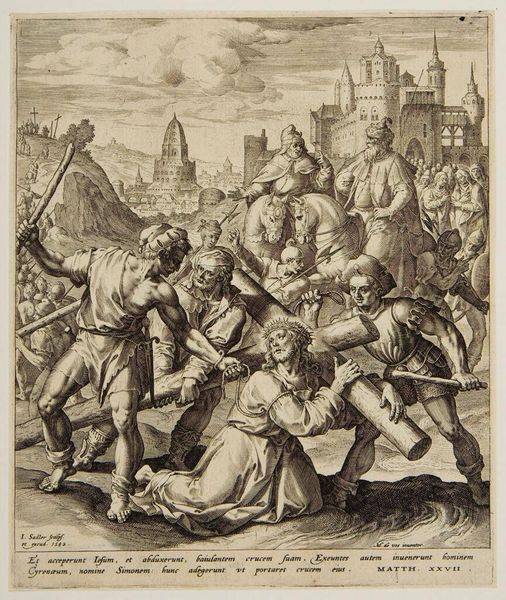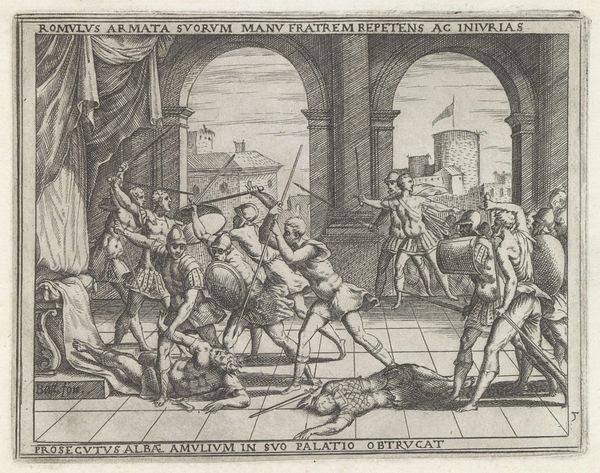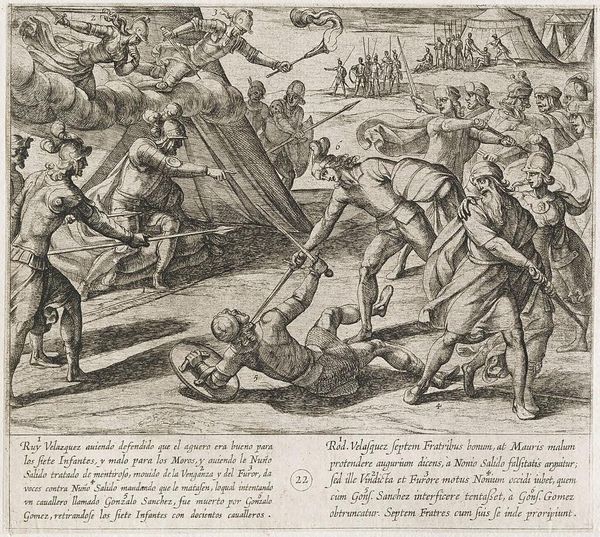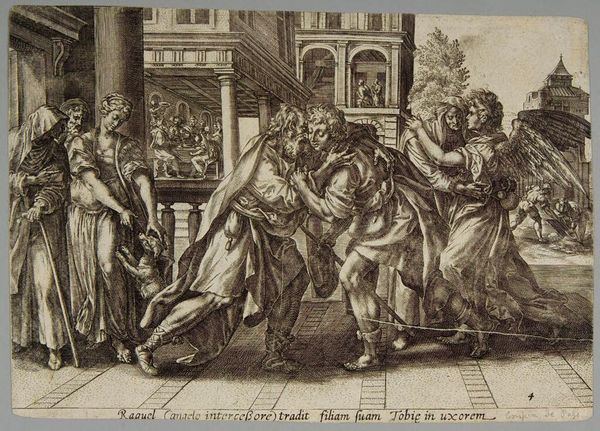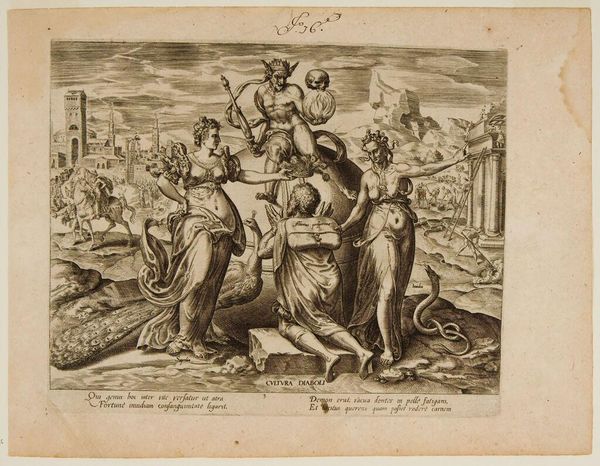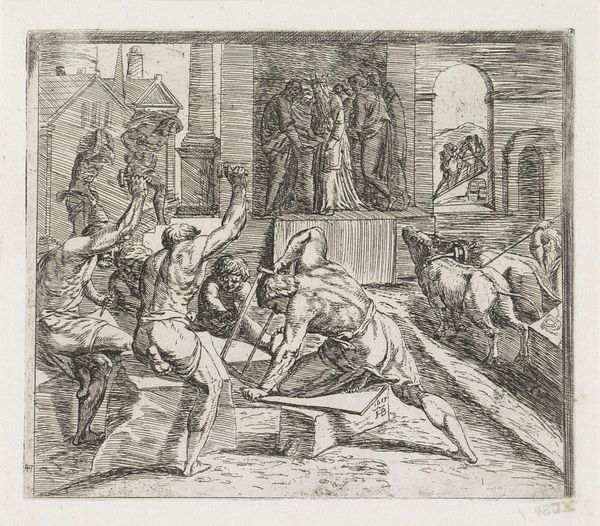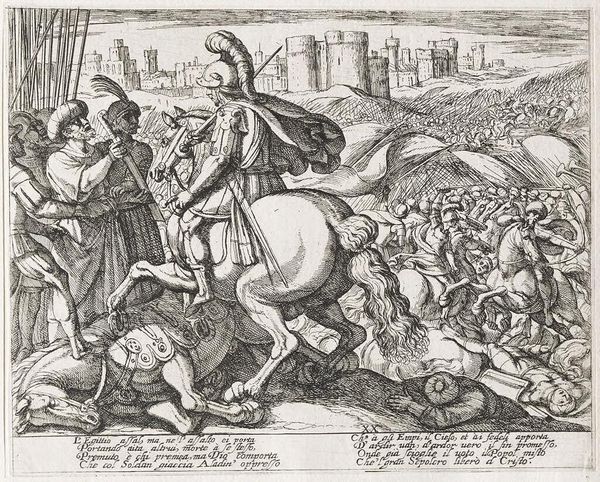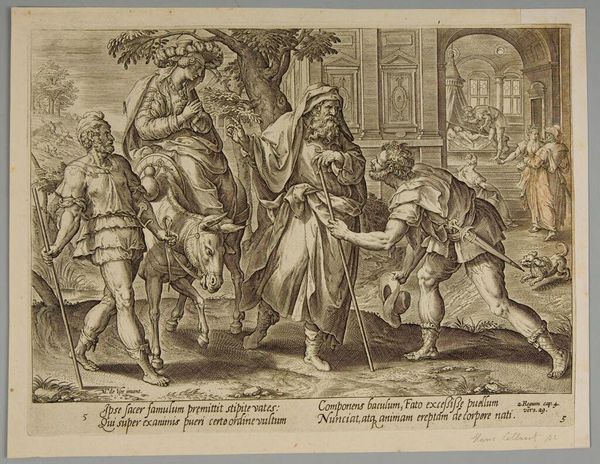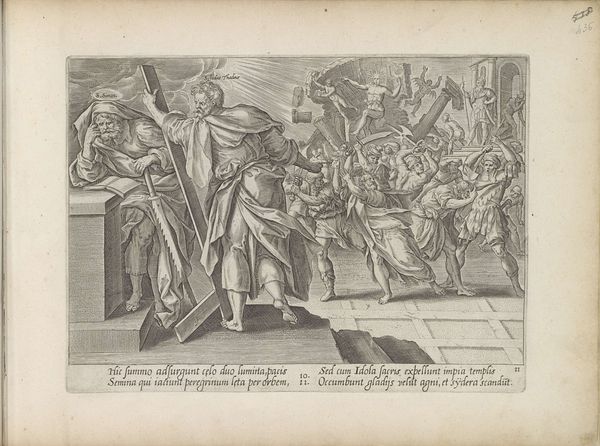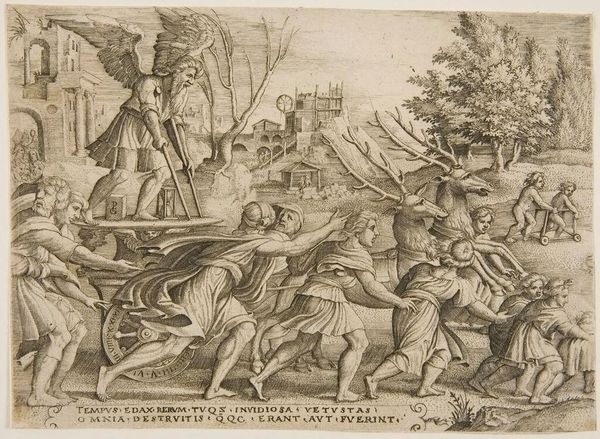
Copyright: CC0 1.0
Curator: The swirling chaos of Johann Sadeler's "Plague of Hail and Locusts" immediately strikes me. The dense etching style creates a palpable sense of unease. Editor: Indeed. Sadeler, active around 1600, captures a key moment of divine wrath. It's interesting to see how artists visualized biblical narratives during this period. How did these images shape religious sentiment? Curator: Look at the figures, particularly that deity in the corner. The visual language is rich with symbolic associations. The sphere suggests dominion, while the posture speaks to ancient power. These symbols would have resonated deeply. Editor: Absolutely. And the composition itself directs our gaze. Pharaoh's court, a symbol of earthly power, is rendered powerless before these plagues, reminding viewers of divine judgment and the socio-political order that upheld such beliefs. Curator: This piece also speaks to the lasting power of visual storytelling. Despite the lack of color, the narrative is remarkably clear. Even today, we intuitively understand the emotional weight of the plagues. Editor: It’s fascinating how a single image encapsulates such a complex set of historical, religious, and societal power dynamics. Curator: Precisely. And it's precisely the interplay of the symbolic and the historical that keeps this work so relevant.
Comments
No comments
Be the first to comment and join the conversation on the ultimate creative platform.
